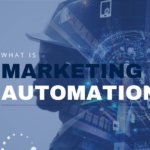Introduction
Do you know almost 87% of marketers admit that data is the most under-utilized asset of their companies?
Undoubtedly, data in marketing serves as the cornerstone of modern marketing efforts, providing invaluable insights into consumer behavior, preferences, and market trends. Data driven marketing strategy is more than just leveraging information; it involves systematically using data to inform every aspect of marketing strategy and execution.
By harnessing data effectively, you can tailor marketing initiatives to resonate with your target audience, optimize campaign performance, and drive meaningful engagement.
From empowering businesses to data driven targeting accuracy, data driven marketing strategy comes with a gamut of benefits. Moreover, it enables real-time performance monitoring, allowing you to adapt strategies promptly.
In this post, let’s understand the importance of data driven marketing strategy profoundly.
Understanding Data Driven Marketing
Data driven marketing is a strategic approach that utilizes data analytics and insights to optimize marketing efforts. It comprises gathering and analyzing customer data from various sources to understand behaviors, preferences, and interactions. By using this data, you can create targeted campaigns, personalized messaging, and optimize marketing strategies for better Return On Investment (ROI) and customer satisfaction.
Unlike traditional marketing, which relies on generalized strategies and assumptions, data driven marketing strategy is highly targeted and personalized. It uses real-time data to segment audiences precisely and deliver relevant content at the right time through preferred channels.
Let’s understand data driven marketing further with some examples:
- Personalized Recommendations: A majority of eCommerce stores, including Amazon, use customer purchase history and browsing behavior to recommend products tailored to individual preferences.
- Behavioral Targeting: Facebook and Google Ads analyze user behavior to display ads based on interests and previous interactions.
- Predictive Analytics: Netflix predicts viewer preferences based on viewing habits to recommend shows and movies likely to be enjoyed.
Common Data Sources for Marketing
Here’s a fun fact: Almost 40% of brands are set to bring an increase in their data driven marketing strategy.
If you want to be in the lead as well, you must know where to get data for marketing first. Here are some of the sources you can explore.
- Customer Relationship Management (CRM) Platforms

Customer Relationship Management (CRM) platforms like Salesforce, HubSpot, or Zoho store and manage customer interactions throughout the customer lifecycle.
To leverage customer data effectively in digital marketing campaigns, focus on how to apply this data for targeted strategies:
- Customer Data Collection: Gather detailed customer information from a centralized source, including contact details, purchase history, interactions, preferences, and demographics.
- Segmentation and Data Driven Targeting: Break down customer data into specific segments based on criteria such as:
- Demographics: Age, gender, income, and career type.
- Behavioral Data: Purchase behavior, frequency of visits, and interactions with your business.
- Interests: Personal interests and preferences relevant to your products.
- Personalization: Use segmented data to create personalized ad copy and creatives. This can include:
- Personalized Email Campaigns: Send tailored messages based on user behavior and preferences.
- Targeted Advertising: Display ads customized to individual interests and behaviors, such as targeting users who frequently visit your site or have abandoned their cart.
- Audience Research Tools
Audience research tools serve as an important data source for marketing by providing detailed insights into audience preferences, behaviors, and demographics through methods like surveys and social media analytics. This data helps:
- Segment Target Audience: identify and understand different audience segments.
- Personalize Messages: Develop marketing messages that resonate with specific audience groups.
- Create Content Strategy: Craft content that aligns with the interests and needs of your target audience.
- Market Research Tools
Market research tools use various methodologies such as focus groups, interviews, surveys, and secondary data analysis to gather and evaluate quantitative and qualitative data on market trends, consumer attitudes, and competitive landscapes. Here’s how market research tools contribute as data sources for marketing:
- Consumer Insights: Provide a deep understanding of consumer preferences, behaviors, buying patterns, and attitudes towards products or services.
- Competitive Analysis: Gather information on competitors’ strategies, strengths, weaknesses, and market positioning.
- Trend Identification: Monitor industry trends, emerging technologies, and market shifts that impact consumer behavior and preferences.
- Competitive Intelligence Tools
Competitive intelligence (CI) tools serve as invaluable data sources for marketing data strategy by providing insights into competitors’ strategies, activities, and performance within the market. Here’s how CI tools contribute as data sources for marketing:
- Competitor Analysis: Gather comprehensive information about competitors, including their products or services, pricing strategies, distribution channels, and market positioning.
- Market Share Analysis: Estimate competitors’ market share and track changes over time to assess market dynamics.
- Benchmarking: Compare your performance metrics (such as sales, customer satisfaction, and brand perception) against competitors to identify strengths and areas for improvement.
- Website Analytics Tools
Website analytics tools are crucial data sources for marketing as they provide detailed insights into website performance, user behavior, and the effectiveness of marketing data strategy campaigns. Here’s how website analytics tools contribute as data sources for marketing:
- Visitor Metrics: Track and analyze website traffic metrics such as unique visitors, page views, session duration, bounce rate, and traffic sources (organic search, direct, referral, social media, etc.).
- User Behavior: Understand how visitors navigate through the website, which pages they visit most frequently, and where they drop off in the conversion funnel.
- Conversion Analysis: Measure conversion rates for different goals (e.g., purchases, form submissions, newsletter sign-ups) and identify conversion barriers or optimization opportunities.
- Email Marketing Platforms
Email marketing platforms serve as rich data sources for marketing by providing comprehensive insights into subscriber behavior, campaign performance, and audience engagement. Here’s how email marketing platforms contribute as data sources for marketing:
- Subscriber Insights: Gather data on subscribers, such as demographics (age, gender, location), preferences, interests, and past interactions with emails.
- Email Campaign Performance: Track key metrics, including open rates, Click-Through Rates (CTR), conversion rates, unsubscribe rates, and bounce rates to measure the effectiveness of email campaigns.
- A/B Testing: Conduct A/B tests on subject lines, email content, call-to-action buttons, and send times to identify optimal strategies for maximizing engagement and conversion rates.
- Social Media Platforms
Social media platforms are robust data sources for marketing, offering extensive insights into audience demographics, behaviors, preferences, and interactions. Here’s how social media platforms contribute as data sources for marketing:
- Audience Insights: Access demographic data (age, gender, location, language) and psychographic information (interests, hobbies, preferences) of your followers and target audience.
- Engagement Metrics: Track engagement metrics, including likes, comments, shares, and clicks to gauge the effectiveness of content and campaigns.
- Follower Growth: Monitor trends in follower growth and understand factors influencing increases or decreases in follower count.
- Conducting Own Surveys and Experiments
Conducting your surveys and experiments serves as a valuable data source for marketing by providing direct insights into customer preferences, behaviors, and perceptions. Here’s how surveys and experiments contribute as data sources for marketing:
- Customized Insights: Design surveys to gather specific information about your target audience, such as demographic details, purchasing habits, brand preferences, and satisfaction levels.
- Feedback Collection: Obtain direct feedback from customers regarding products, services, customer service experiences, and overall brand perception.
- Market Research: Conduct market research surveys to identify market trends, understand consumer needs, and evaluate market demand for new products or services.
Benefits of Data Driven Marketing
Jotted down below are some of the considerable benefits of data driven marketing strategy:
- Enhanced Customer Targeting and Segmentation
Data driven marketing strategy enables precise segmentation of audiences based on demographics, behaviors, and preferences. By understanding customer segments better, you can tailor messaging and campaigns to resonate with specific audience segments, increasing relevance and engagement.
- Improved Personalization and User Experience
With access to customer data in digital marketing campaigns, you can create personalized ad copy and creatives tailored to specific user segments. By analyzing individual preferences and behaviors, you can deliver recommendations, targeted offers, and content that resonates more with each user. This data-driven marketing approach enhances the user experience, increases conversion rates, and strengthens customer satisfaction and loyalty, fostering deeper connections with the brand.
Let’s understand it further with an example. Suppose an online clothing retailer uses customer data to enhance personalization and user experience. By analyzing browsing history, previous purchases, and preferences, the retailer creates personalized email campaigns featuring product recommendations based on each customer’s style. Additionally, when a customer visits the website, they see tailored product suggestions and targeted promotions aligned with their interests. This personalized approach not only improves customer satisfaction but also increases the likelihood of repeat purchases and brand loyalty.
- More Effective Resource Allocation
Data driven insights help optimize marketing spend by identifying high-performing channels, campaigns, and tactics. You can allocate resources effectively to initiatives that yield the highest ROI, reducing wastage and maximizing marketing impact.
- Streamlined Decision-Making
Data driven marketing strategy provides actionable insights in real-time, enabling agile decision-making. You can quickly adapt strategies based on performance metrics and market trends, ensuring responsiveness to changing consumer behaviors and competitive dynamics.
- Retargeting Campaigns
Retargeting campaigns benefit from data-driven marketing by using detailed user behavior insights to re-engage potential customers who have previously interacted with your brand. This approach enhances conversion rates by delivering personalized, relevant ads, thus improving ROI and increasing the likelihood of completing the desired action.
Challenges in Data Driven Marketing
Here are some of the common challenges in data driven marketing strategy:
- Collecting and Analyzing Data
Gathering relevant data from varying sources and ensuring its accuracy and completeness can be challenging. You must employ strong data collection methods and analytical tools to derive actionable insights effectively.
- Managing and Integrating Data Sources
Consolidating data from multiple platforms and systems into a unified view can be complex. Integration challenges often require technical expertise and dedicated resources to maintain data consistency and integrity.
- Overcoming Data Structure
Data structure occurs when information is isolated within departments or systems, hindering cross-functional collaboration and comprehensive analysis. Breaking down the data structure involves establishing data governance frameworks. It also includes fostering a culture of data sharing and collaboration.
- Building In-House Data Teams
Recruiting and retaining skilled data professionals, including data scientists, analysts, and engineers, is a significant challenge. Organizations need to invest in training, infrastructure, and tools to build and sustain effective in-house data teams capable of driving insights and innovation.
- Ensuring Data Compliance and Privacy
Adhering to data protection regulations is critical. You must implement stringent data security measures, get consent for data collection and usage, and ensure transparency in data practices to mitigate risks and comply with legal requirements.
If challenges are forcing you to step away from game-changing data driven marketing strategy, Maino.ai can help you by automating tasks such as social media posting, ad campaign management, and cross-platform budget allocation. By doing so, it liberates you to focus on strategic endeavors while ensuring accurate ROI measurement through conversion attribution and budget optimization.
Key Data Driven Marketing Strategies
Here are some key data driven marketing strategy that you can implement.
- Setting Clear, Measurable Goals
Define specific objectives such as increasing sales, improving customer retention, or expanding market reach. Establishing clear metrics and Key Performance Indicators (KPIs) ensures alignment with business objectives and enables quantifiable measurement of marketing performance.
- Collecting and Managing High-Quality Data
Implement data collection methods across various touchpoints to gather accurate and relevant customer information. Use data management tools and practices to maintain data quality and integrity for reliable insights.
- Segmenting and Targeting Your Audience
Divide your audience into different segments based on demographics, behaviors, or preferences. Tailor marketing messages and campaigns to each segment’s needs and characteristics to enhance relevance and engagement.
- Personalizing Marketing Efforts
Utilize customer data to deliver personalized experiences through targeted messaging, product recommendations, and promotional offers. Personalization enhances customer satisfaction and loyalty by addressing individual preferences and needs.
- Using Data to Optimize Content
Analyze data insights to understand content performance and audience engagement. Optimize content creation and distribution strategies based on data driven insights to deliver valuable and relevant content that resonates with your target audience.
- Retargeting Advertising Efforts
Employ retargeting strategies to reconnect with website visitors or previous customers who didn’t convert initially. Use behavioral data to deliver personalized ads across digital channels, encouraging return visits and conversions.
- Aligning Marketing, Sales, and Support Teams
Foster collaboration and data-sharing among marketing, sales, and customer support teams. Align strategies and workflows to ensure seamless customer experiences throughout the buyer’s journey, from awareness to advocacy.
Implementing Data Driven Marketing
Implementing data driven marketing strategy requires cross-functional collaboration, investment in analytics technology, and a commitment to continuous testing and optimization. Here is how you can do it easily:
- Creating a Marketing Dashboard
Develop a centralized marketing dashboard that consolidates key performance metrics and KPIs from various channels. Visualize data in real-time to monitor campaign effectiveness, track goals, and identify trends for informed decision-making.
- Utilizing Marketing Analytics Platforms
Implement marketing analytics platforms like Maino.ai, Google Analytics, Adobe Analytics, or HubSpot. These tools provide comprehensive insights into customer behavior, conversion rates, and campaign performance across multiple channels.
- Conducting A/B Testing to Optimize Campaigns
Use A/B testing to experiment with different elements of marketing campaigns, such as ad copy, visuals, and CTAs, to determine the most effective variations. Split test campaigns and analyze performance metrics to identify winning variations that drive higher engagement, conversions, and ROI.
Best Practices for Data Driven Marketing

A fun fact: Almost 7 in 10 marketers of leading companies have claimed that their companies are using data to support internal decision-making.
Here are some best practices for data driven marketing strategy that you can leverage to enhance data driven targeting accuracy, personalize customer experiences, optimize campaigns, and drive business growth.
- Knowing Your Audience
Conduct thorough audience research to understand demographics, behaviors, preferences, and pain points. Use data analytics to create detailed customer personas and segment your audience effectively for targeted marketing campaigns.
- Maintaining Data Hygiene
Ensure data accuracy, completeness, and consistency by regularly cleaning and validating data. Implement data quality checks and processes to minimize errors and duplicates, ensuring reliable insights for decision-making.
- Centralizing Data Storage
Gather data from different sources into a centralized database or data warehouse. This allows for easier access, integration, and analysis of data across departments, promoting collaboration and ensuring a single source of truth for insights.
- Investing in Data Literacy and Training
Equip marketing teams with the skills and knowledge to interpret and use data effectively. Provide training on data analytics tools, methodologies, and best practices to empower marketers to derive actionable insights and make informed decisions.
- Staying Compliant with Data Regulations
Adhere to data protection laws and regulations such as GDPR, CCPA, and others applicable to your region or industry. Obtain proper consent for data collection, storage, and usage, and implement security measures to safeguard customer information and maintain trust.
Tools for Data Driven Marketing
Let’s find out some data driven marketing tools that empower you to collect, analyze, and interpret data effectively to optimize marketing campaigns, improve customer engagement, and achieve business goals in the list below:
- Maino.ai
Maino.ai helps your businesses extensively by automating varying tasks, ad campaign management, and cross-platform budget allocation. Emphasizing a culture driven by data and ongoing education, Maino.ai empowers businesses to swiftly adapt, predict customer requirements, and maintain a competitive edge.
- HubSpot Marketing Hub
HubSpot offers a comprehensive marketing automation platform that includes tools for email marketing, lead generation, social media management, and analytics. It provides insights into customer interactions, campaign performance, and lead nurturing processes, facilitating data driven decision-making.
- Google Analytics
Google Analytics is a widely-used web analytics tool that tracks and reports website traffic, user behavior, and conversion metrics. It offers insights into audience demographics, acquisition channels, and website performance, enabling marketers to optimize digital marketing strategies based on data driven insights.
- Buzzsumo
Buzzsumo is a content research and discovery tool that helps marketers identify trending topics, analyze content performance, and monitor competitor strategies. It provides insights into social media engagement, content shares, and influencer outreach, supporting data driven content marketing efforts.
Conclusion
Embracing data driven strategies is not just advantageous but imperative for staying competitive in dynamic markets. Organizations are encouraged to invest in data literacy, maintain data hygiene, and adhere to data regulations to foster a culture of informed decision-making and continuous improvement.
Looking ahead, future trends in data driven marketing strategy include advancements in AI and machine learning for predictive analytics, deeper integration of customer data across platforms, and enhanced privacy measures to build and maintain customer trust.
You can now adopt these trends through Maino.ai that helps you use the power of data, navigate uncertainties, anticipate market shifts, and drive sustained growth through strategic data driven marketing initiatives.













